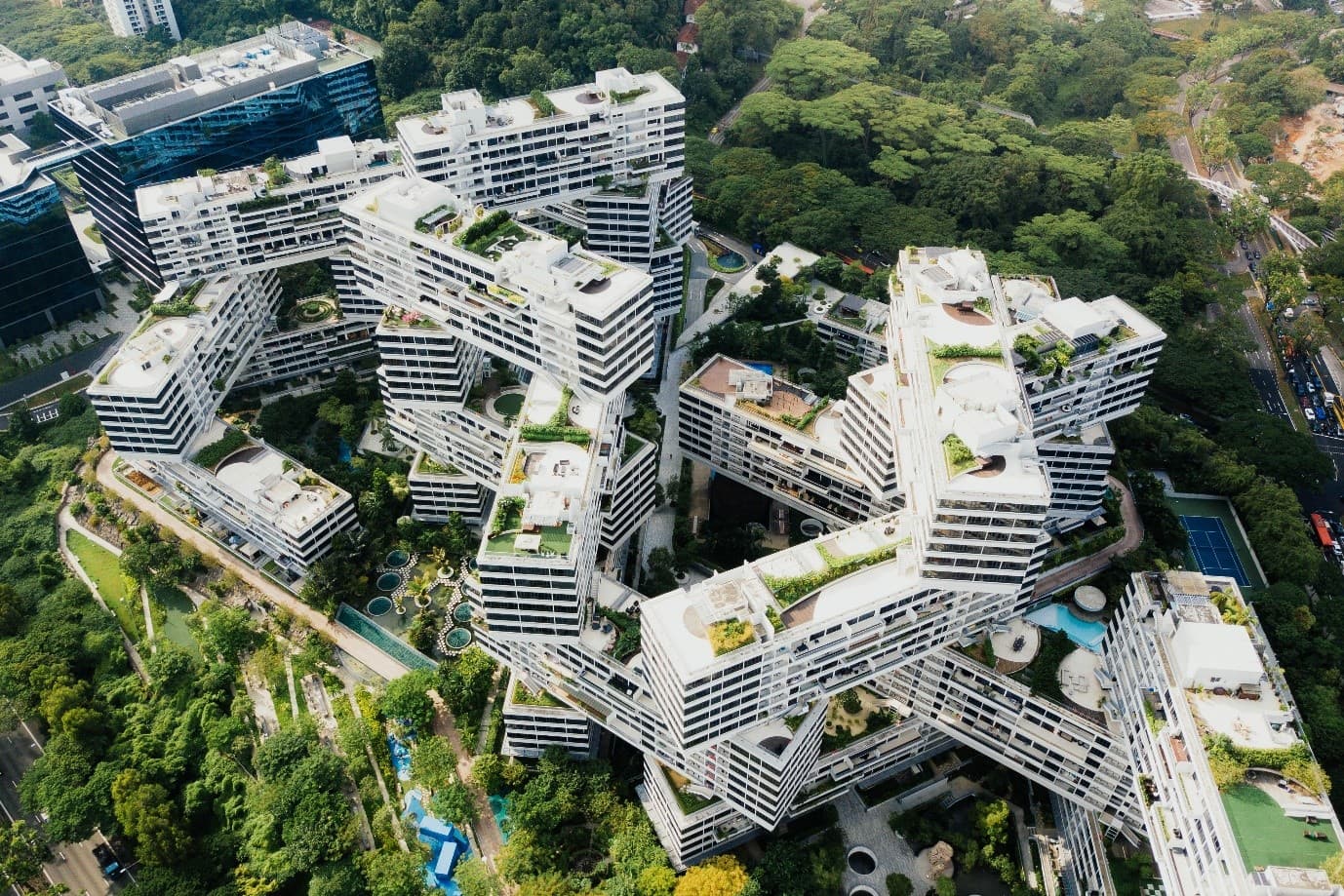Insights
Living challenge series: human health and happiness.
Part 4: living breathing homes, urban forests, and wellness neighbourhoods.
Our cities provide insight into the future of urban living. This Living Challenges series looks at how the problems society is facing are being turned into possibilities…
A recent World Health Organisation study that found that 80-90 percent of our health outcomes are intimately tied to where and how we live. As of 2016, 90 percent of urban dwellers have been breathing unsafe air, while more than half of the global urban population was exposed to air pollution levels at least 2.5 times higher than the safety standard. And our needs don’t stop at better air quality: useable green spaces, comfortable environments, biophilic design, daylight exposure, reduced noise pollution, sustainable commuting choices, access to community spaces, and the desire for human connection all need to be considered in the context of our future cities.
As spaces shrink, buildings get higher, and city dwellers’ lives become more digitised, the health and wellbeing argument only grows.
The possibilities:
The rapid urban development in China certainly gives the West an example when it comes to living. The British Council’s Li Ying believes collaboration between the UK and China could benefit both sides:
“Chinese architecture is defined by diversity. It takes inspiration from home and abroad, and embraces both traditional and contemporary elements. Due to the scale and speed of urban development, it also increasingly embodies technological innovation, most notably digital influences and green architecture for energy savings.”
Living breathing homes
This green architecture will likely extend to us having ‘living breathing’ homes as standard. The explosion of biophilic design into the workplace will no doubt reach the residential sector soon, as the evidence for its benefits becomes more mainstream. When research by the Harvard T.H. Chan School of Public Health shows that cleaner, fresher air created through indoor plants can nearly double people’s cognitive performance and relieve stress, then it’s only a matter of time before this extends to our homes.
Taking this further, we could even see ‘wellness neighbourhoods’ dotted across cities.
The wellness village concept, which is currently springing up in rural neighbourhoods, has already become a billion-dollar industry worldwide, expected to grow to $180 billion by 2022.
In cities, the concept could result in mixed-use centres dedicated to holistic health and wellness – where spaces are designed to support residents’ physical and emotional wellbeing.

Meanwhile, for nature lovers, the countryside might no longer be the only option. In our future cities many of us could be living close to, or even inside, newly planted urban forests – allowing us to take in the wellbeing benefits of daily ‘forest bathing’ (aka absorbing the calming effects of trees), which is now one of the cornerstones of Japanese healthcare.
Cities have also woken up to the extensive advantages that tree planting can provide on a practical level – from protecting against flooding and the overheating effects of heat waves, to reduced air pollution. Even by the end of the century, it’s unlikely we’ll ever have found a structure with benefits that match those of the humble tree.
Ultimately, our cities have the potential to usher in a new era of wellbeing, resource efficiency, and economic growth. It’s no coincidence that almost all of the possibilities explored here will provide a stronger community connection and interaction between people. Whether it’s co-living, wellness neighbourhoods, or climate-adaptive homes – they all embrace a way of life centred around a diverse, multi-generational community.
The future of urban living, it seems, is all about connection to our natural environment and closer connection to one another.
Read part 1: combatting the cost of housing
Read part 2: responding to reduced space
Read part 3: a changing climate